
Planning Long Distance Outings
OR
How I Learned To Stop Worrying and Love the Mountains
(The following has been updated from a series or articles I wrote for the Tennessee Chapter of the Sierra Club's Newsletter in 1988. I have tried to remove or modify the dated stuff. Some lessons never go out of date.)
The first time I flew out west to go camping, I factored in a day at the beginning of the trip to do my shopping and supplies gathering. As a result of that experience, I decided that spending all day in grocery stores and K-Marts in Las Vegas is not as much fun as it sounds. I've learned quite a bit since then - mostly by making mistakes and figuring out how to do things better. I thought I would share with you some of the things I've learned, so that you can make different mistakes from those that I have made.
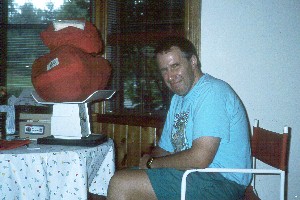 A friend of mine once said, "Roger, you don't go on vacation; you plan an adventure!" Well, I don't know about planning the adventure part, but I do like to put a little planning into my trips, so that I can concentrate more on the adventure part, and less on the toilet paper that I might forget to pack. In the ensuing discussion, I want to limit my comments to a particular kind of trip: a multi-day backpack (or river trip) with your friends which takes you fairly deep into the wilderness, which is not organized by an outfitter. Personally, I think that its wiser to decide what trip you want to take before deciding whom you want to accompany you. We'll talk about trip selection first, and save people picking and travel logistics for later in this article.
A friend of mine once said, "Roger, you don't go on vacation; you plan an adventure!" Well, I don't know about planning the adventure part, but I do like to put a little planning into my trips, so that I can concentrate more on the adventure part, and less on the toilet paper that I might forget to pack. In the ensuing discussion, I want to limit my comments to a particular kind of trip: a multi-day backpack (or river trip) with your friends which takes you fairly deep into the wilderness, which is not organized by an outfitter. Personally, I think that its wiser to decide what trip you want to take before deciding whom you want to accompany you. We'll talk about trip selection first, and save people picking and travel logistics for later in this article.
My experience has been that there are four critical steps in selecting the trip that you want to take. First, you have to decide what aspect of the trip is most important to you, such as scenery, solitude, or wildlife viewing. Secondly, you have to come to grips with the constraints that you face. Third, you must gather your information resources about you. Fourth, you decide on the specific route that you will take.
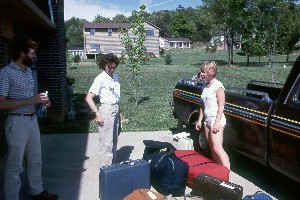 First, what's most important to you? People go into the wilderness for different reasons: solitude, scenery, fishing, physical challenge, achieving some goal, hanging out with their friends, weather, etc. You're likely to enjoy your trip much more if you make a conscious decision as to what you're after. It certainly makes the planning process much easier. For example, if you really want to get away from people, don't plan to hike the John Muir Trail through the Sierras in August. Instead, you might want to consider Montana's Beartooth Range in September. Of course, you might have to put up with a little snow - OK, maybe a lot of snow - there are always trade-offs.
First, what's most important to you? People go into the wilderness for different reasons: solitude, scenery, fishing, physical challenge, achieving some goal, hanging out with their friends, weather, etc. You're likely to enjoy your trip much more if you make a conscious decision as to what you're after. It certainly makes the planning process much easier. For example, if you really want to get away from people, don't plan to hike the John Muir Trail through the Sierras in August. Instead, you might want to consider Montana's Beartooth Range in September. Of course, you might have to put up with a little snow - OK, maybe a lot of snow - there are always trade-offs.
Secondly, consider the limitations which you face. Everyone has them. You just have to decide which ones are genuine, and which are figments of your imagination. External constraints usually include money and time. Be realistic about each one of these. If money is a little tight this year, maybe this is not the time for planning a trip north of the Arctic Circle, which will require 8 hours of air taxi time at $300 per hour. And most of us are not blessed with an infinite supply of time. For example, even though you might like to get away from the office for 3 weeks this summer, the stress caused by leaving your work for so long may negate any benefits in terms of stress reduction which you might get from the vacation. The important thing is to be realistic: genuinely so. 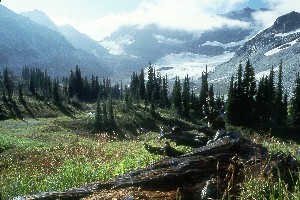 Deciding if you can really afford a trip is a tricky task. It is true that vacations, by their very nature, are expensive. Some people think a driving vacation will be less expensive than flying someplace. However, my experience has been that if I can afford to go, I can usually afford to fly. This may also be the case for more people than one might think. Let's use a trip I recently took as an example. Ten of us recently took a trip to Southern Utah to backpack in Escalante Canyon. From Knoxville, it is about 1800 miles to the trailhead. At 31 cents per mile (You think you can do it cheaper? Great, go into business leasing folks $22K cars and pay all their gas, tires, maintenance, and insurance and see how much money you make.), that is about $1100 round trip. Susie and I paid $356 each for our tickets to Salt Lake City, and about another $250 each for our share of van and shuttle car rental, two nites in motels at the beginning and end of the trip, and a great Mexican dinner in SLC. That is just about break even. Of course, we did not spend a couple of extra vacation days on the road, and we missed out on the "joy" of driving across Tennessee, Arkansas, Oklahoma, Texas, New Mexico, and half of Arizona, and part of Utah. My butt hurts just thinking about that.
Deciding if you can really afford a trip is a tricky task. It is true that vacations, by their very nature, are expensive. Some people think a driving vacation will be less expensive than flying someplace. However, my experience has been that if I can afford to go, I can usually afford to fly. This may also be the case for more people than one might think. Let's use a trip I recently took as an example. Ten of us recently took a trip to Southern Utah to backpack in Escalante Canyon. From Knoxville, it is about 1800 miles to the trailhead. At 31 cents per mile (You think you can do it cheaper? Great, go into business leasing folks $22K cars and pay all their gas, tires, maintenance, and insurance and see how much money you make.), that is about $1100 round trip. Susie and I paid $356 each for our tickets to Salt Lake City, and about another $250 each for our share of van and shuttle car rental, two nites in motels at the beginning and end of the trip, and a great Mexican dinner in SLC. That is just about break even. Of course, we did not spend a couple of extra vacation days on the road, and we missed out on the "joy" of driving across Tennessee, Arkansas, Oklahoma, Texas, New Mexico, and half of Arizona, and part of Utah. My butt hurts just thinking about that.
Perhaps the most important internal limitations are the amount of skills, physical endurance or prowess, and mettle that each member of the party possesses. 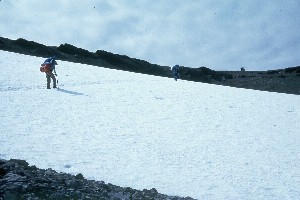 Don't let anybody kid you, backpacking with your share of a week's food on your back is hard work. Of course, the rewards that I derive make it all worthwhile. To me, when you're hiking through a beautiful mountain meadow, and you're complaining about how much you hurt, well, that's a little like complaining about sex 'cause it's too juicy. Really, even with high tech gear and fancy hip belts, my hips usually hurt for the first half of any trip. If you add to that the difficulty of hiking cross country, or elevation above 9000 feet, the physical demands may become so great that they diminish the joy of the trip. Everyone has their own personal limit. Mine seems to be somewhere around 75 lbs on my back, which translates into a 7 - 10 day trip. Beyond that, the food becomes so heavy that I'm at an unacceptable level of discomfort (as opposed to the "acceptable" level of discomfort which I normally experience). At any rate, decide ahead of time what your acceptable level of discomfort is, and give it a try on a local weekend backpack. You may decide that you really don't need that hardbound edition of War and Peace after all. You might do like I did once: drill holes in the handle of your toothbrush to save precious milligrams.
Don't let anybody kid you, backpacking with your share of a week's food on your back is hard work. Of course, the rewards that I derive make it all worthwhile. To me, when you're hiking through a beautiful mountain meadow, and you're complaining about how much you hurt, well, that's a little like complaining about sex 'cause it's too juicy. Really, even with high tech gear and fancy hip belts, my hips usually hurt for the first half of any trip. If you add to that the difficulty of hiking cross country, or elevation above 9000 feet, the physical demands may become so great that they diminish the joy of the trip. Everyone has their own personal limit. Mine seems to be somewhere around 75 lbs on my back, which translates into a 7 - 10 day trip. Beyond that, the food becomes so heavy that I'm at an unacceptable level of discomfort (as opposed to the "acceptable" level of discomfort which I normally experience). At any rate, decide ahead of time what your acceptable level of discomfort is, and give it a try on a local weekend backpack. You may decide that you really don't need that hardbound edition of War and Peace after all. You might do like I did once: drill holes in the handle of your toothbrush to save precious milligrams.
With the third step, it's time to get down to specifics, and decide where you want to go. One of the best sources of information is other people. For example, when I started considering going to the Pacific Northwest for a couple of backpacks, I talked first to my good friends who'd been there twice doing the same sort of activity. I questioned them relentlessly about the difficulty of the terrain and weather conditions. They didn't mind. Most everybody likes to give advice. But consider this word of caution. Either know the values and wilderness travel habits of the individual whose advice you're seeking, or take what they say with a grain of salt, and try to get multiple opinions. Often people will subconsciously include their own values into their advice to you. For example, if you're looking for a laid back, reasonably easy trip, beware of the advice that Mr. Macho Man Backpacker gives you when he tells you that a given route is a piece of cake. You may not end up over your head; just a little more uncomfortable than you had intended to be.
Another source of information that almost everyone has some sort of access to is the Internet. The kind of information you can dig up can be exceedingly detailed, if you know how to search for it. This is not the place to discuss search engines and such but suffice it to say that the knowledge you can pick up can be really priceless especially if you are going to do a trip that is a bit out of the ordinary. For example, couple of years ago, I was in the throws of planning an off-trail trip in the Grand Canyon. (You can read all about how it turned out elsewhere on this site.) I did a search for a creek on part of the route, and read a detailed description of someone else's experiences on it. Based on that reading, I ultimately decided that it was more "fun" than I thought we wanted, and so I altered the trip route.
With the publishing of Michael Kelsey's guides to the Utah canyon country, it's really hard to find a major potential hiking area in the lower 48 states that is not covered by at least one trail guide. Some places in California are covered by four or five. Hiking guides are absolutely invaluable in helping you to plan your trip. Of course, there are probably some purists out there who want to discover the wilderness without help from anyone else. That's great - for them. It has been my experience that the wilderness, along with the weather, etc. throws enough at me with which to deal that I can usually use all the help I can get. So where do you get these guides? 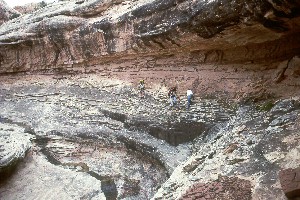 Again, a good place to start is your friends. At any given time, I will have four or five guides loaned out. I do make a rule (and suggest that you do the same) that no loaned guides go on the trip. Several days of being jammed in a pack can be pretty hard on a book. If your friends never heard of the Yellow Bellied Sapsucker Wilderness, then the next stop is your local bookstore or backpacking supply shop, or one of the Internet-based book sellers, like amazon.com. If that doesn't work, try calling the REI Coop located in the city nearest the area in which you want to hike. A word of caution - like the human resource, take what they say with a grain of salt, especially when it comes to the time required to cover a given piece of ground. Twelve years ago, we covered backpacking in a grueling day what the Climber's Guide to the Olympic Mountains said was a easy half day. Nine years later, we spent two days covering the same terrain. Maybe if we'd been Reinhold Messner, it'd have been a piece of cake.
Again, a good place to start is your friends. At any given time, I will have four or five guides loaned out. I do make a rule (and suggest that you do the same) that no loaned guides go on the trip. Several days of being jammed in a pack can be pretty hard on a book. If your friends never heard of the Yellow Bellied Sapsucker Wilderness, then the next stop is your local bookstore or backpacking supply shop, or one of the Internet-based book sellers, like amazon.com. If that doesn't work, try calling the REI Coop located in the city nearest the area in which you want to hike. A word of caution - like the human resource, take what they say with a grain of salt, especially when it comes to the time required to cover a given piece of ground. Twelve years ago, we covered backpacking in a grueling day what the Climber's Guide to the Olympic Mountains said was a easy half day. Nine years later, we spent two days covering the same terrain. Maybe if we'd been Reinhold Messner, it'd have been a piece of cake.
I've lumped maps in the category of guides, because I've found that you usually need to link the various descriptions of individual hikes together prior to deciding on a particular route. If you're heading to a National Park, a good map to start with is the backcountry trails map, which you can get by writing. Forest Service or BLM maps are helpful as well if you'll be in their jurisdiction. Of course, the ultimate map is the topographic map, available from the US Geological Survey in Denver, or digitally, like with TOPO! or Terrain Navigator. (See elsewhere on this site for more detailed information and reviews on such.) And you can get free Digital Raster Graphics, which are really scanned version of topo maps at a variety of web sites. If you don't know what a topo map is, or how to read it, you'd better learn before you hit the trail. Actually, reading topo maps in the West is usually much easier than doing so locally - as long as the fog hasn't rolled in. That's because peaks are more prominent, and the vegetation is often thinner.
Fourth - let's pick a route. To me, this is one of the most interesting aspects of trip planning, but it can be one of the trickiest. I've found that I start by picking the area I want to be in, and trying to find a loop hike I can take. Once I have that, I think my way through the route, day by day. A suggestion: take or make a piece of graph paper and make the horizontal axis represent mileage on the trail and the vertical axis represent the elevation. Plot your route on this graph. Alternatively, use one of the new digital mapping software packages for doing the same plot, or you can do it on a spreadsheet. No matter what approach you use, you might find that you don't really want to climb three 3000' passes in a single day. Some of the things that I take into consideration are the following:
1. Campsites and their location. Are they near water (for drinking or fishing)? Do they have pretty scenery there, or are you going to be deep in the woods.
2. How many hours per day do you want to spend hiking? Think about how fast you backpack locally, and then start decreasing your miles per hour covered. For example, I usually average about 1.7 miles per hour (mph) in the Smokies, if I'm only taking a few pictures. This includes a rest break every 60 - 90 minutes, lunch, and goofing off. When I go out west, I'm taking a lot more pictures, I've got a heavier pack, I might be suffering from a little jet lag, and the altitude might be working on me. I usually drop my rate to between 1 and 1.3 miles per hour. Any time that cross country hiking is involved, I figure about 0.5 mph, unless I have some specific reason to think that things will move more quickly. I recall one stretch in ‘98 when it took us 6.5 hours to go 3.5 miles. On stretches of trail or non-trail that I think might be particularly rough, I usually try to come up with an alternate campsite, so that I can avoid the sort of thing that happened to us a few years ago: My former wife and I had started a 6-day trip in the Cascades with a monumental climb up on to a knife-edged ridge. The only flat spot for camping was 200 feet above the trail several miles out on the ridge. The site was really tough to find when a early season snow storm hit at sunset, and we were really exhausted when we finally found the campsite.
3. Layover days. My experience has taught me that my body really needs a break after carrying the heavy pack 3 or 4 days. Maybe altitude has taken more of a toll than you thought it would, or the terrain has been rougher, or the weather uncooperative. Layover days can be a real safety factor, because they help you avoid having to push yourself to your absolute physical limit. Of course, when the going isn't so tough, they represent a real opportunity to explore the surrounding country, without the burden of your backpack. I've used these days for doing almost everything, from taking a 12 mile day hike (On your day off?), to exploring side canyons, to fishing, to laying in the tent and catching up on my sleep. After all, what are vacations for?
4. Exploration opportunities. My ideal day on the trail includes getting to camp about 2:30 - 3:00 pm, setting up camp, and going off exploring the surrounding area. That's tough to do if you're hiking on-trail deep in the forest. That's why I like to take my trips in the high country, where the exploratory rambling doesn't involve fighting the brush. Think about that when your planning a route. Often, if the exploration potential is low, I'll plan to hike a little further, getting into camp later. Try to think about these activities when you think about your hike. During my first trip to canyon country, we hurried past all kinds of interesting side canyons, just waiting to be explored, because we had to cover these long distances. I've learned since that the distance that you cover is not as important as the fun per hour level.
5. Altitude. I've mentioned altitude several times already. I guess my experiences have left a big impression on me. I remember vividly the mental confusion that altitude sickness can bring: Standing in the middle of the trail, and not being able to figure out where the trail was. Almost any time that you're above 9,000 ft, the lack of oxygen will really take the stuffing out of you. Even though it may not hit you hard, be mentally and physically prepared for it if it does, and plan your route accordingly. And altitude sickness can be pretty sneaky when it sets in. Usually, I hit the wall about the end of my second day. That means I'm plenty deep into the backcountry already. Most of us will only experience relatively minor symptoms - headaches, nausea, loss of appetite, mild confusion and paranoia. But altitude sickness is no laughing matter - it can kill you. IF YOU DO NOT KNOW WHAT PULMONARY EDEMA AND CEREBRAL EDEMA ARE, AND HOW TO RECOGNIZE THE SYMPTOMS, YOU HAVE NO BUSINESS BACKPACKING AT ALTITUDE UNTIL YOU DO. An excellent book on backcountry medicine is Medicine for Mountaineering, published by the Mountaineers in Seattle. Anyway, if you allow for some acclimation time when planning your route, you'll feel better when you're hiking.
6. Bail out routes. Nobody likes to think of having to abort a trip in the middle, but like everything else in life, there are risks when you backpack. Altitude sickness, viral or bacterial infection might get you, or someone may become injured. A river can rise, making it impossible or too dangerous to cross, or a rock slide can block a trail. Maybe a snow storm will dump so much snow that is becomes impossible to proceed as planned. 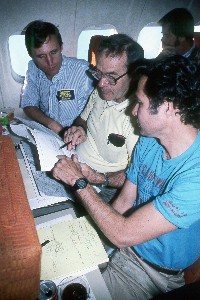 It seems worthwhile to give a little thought to how you might get out if you had to. I personally have been on three trips out West where one member of the party became so ill, or so injured that they had to abort, or (in two of the cases) other members of the party had to carry all or much of their load as the injured party hobbled out. And twice, bad weather - or its consequences - forced us to terminate a trip early. It's always nice to have in mind a potential escape route. It's part of the mental preparation that limits a panic response when things turn sour. Of course, some trips are like an airplane flight across the ocean: once you commit, you either turn around or finish the crossing. Trips in which aborting is impossible and rescue is extremely difficult are just fine. Just be aware that you're getting yourself into that position.
It seems worthwhile to give a little thought to how you might get out if you had to. I personally have been on three trips out West where one member of the party became so ill, or so injured that they had to abort, or (in two of the cases) other members of the party had to carry all or much of their load as the injured party hobbled out. And twice, bad weather - or its consequences - forced us to terminate a trip early. It's always nice to have in mind a potential escape route. It's part of the mental preparation that limits a panic response when things turn sour. Of course, some trips are like an airplane flight across the ocean: once you commit, you either turn around or finish the crossing. Trips in which aborting is impossible and rescue is extremely difficult are just fine. Just be aware that you're getting yourself into that position.
7. Snow and bugs. The presence of deep or steep snow can drastically alter the rate of one's progress. In many mountainous regions, snow does not clear out of the shaded side of high passes until mid-August, or maybe later. Steep snow, especially if the slope has a dangerous run out, can be unnerving, at best. Know your route. Get on the Internet Newsgroup rec.backcountry. Talk to the rangers, early in your planning. If they suggest that you carry an ice axe (so that you can self-arrest a fall), learn how to use one, before you need to. (The need to practice with an ice axe speaks well for planning your trips well in advance. There's just not a whole lot of snow on which to practice in the mountains of Tennessee by May or June before that summer trip.) An ice axe can be a life threatening instrument in the hands of someone who's inexperienced in its use. It can also save your life. Although I've carried an ice axe on several trips, I've only used it to arrest a fall three times. Each time, I was thankful to have carried that two pounds of "dead weight" all over the mountains.
 To some folks, mosquitos and black flies are a minor annoyance. To others, they're a living hell. Know which kind of person you are. Remember that the time of bug hatches varies considerably. Usually, if the place has a lot of standing water, avoid the early summer season. My first wife and I took a trip into the Boundary Waters Canoe Area in late June, 1975. On the first portage, she got (no joke) more than 50 bites on her back and shoulders. Carrying a 75 lb. canoe on your shoulders through the woods on rugged portage trails, keeping every inch of flesh covered, even though the temperature is 85 degrees, with mosquitos crawling all over your bug net only a few inches from your eyes, is not as much fun as it sounds. July can be a bad bug month in some mountain ranges, and I've run into clouds of biting flies in mid-September in Washington's Cascades. Again, talk to the rangers - know what your getting into.
To some folks, mosquitos and black flies are a minor annoyance. To others, they're a living hell. Know which kind of person you are. Remember that the time of bug hatches varies considerably. Usually, if the place has a lot of standing water, avoid the early summer season. My first wife and I took a trip into the Boundary Waters Canoe Area in late June, 1975. On the first portage, she got (no joke) more than 50 bites on her back and shoulders. Carrying a 75 lb. canoe on your shoulders through the woods on rugged portage trails, keeping every inch of flesh covered, even though the temperature is 85 degrees, with mosquitos crawling all over your bug net only a few inches from your eyes, is not as much fun as it sounds. July can be a bad bug month in some mountain ranges, and I've run into clouds of biting flies in mid-September in Washington's Cascades. Again, talk to the rangers - know what your getting into.
OK. Now that you've got the time and place of your trip picked, and your route figured out, it's the time to start thinking about the kind of people that you want to have on this trip, the logistics of getting smoothly from where you are to where you want to be, and some last minute equipment details. We'll discuss those items in Part 2.
© Roger A. Jenkins, 1988, 2000